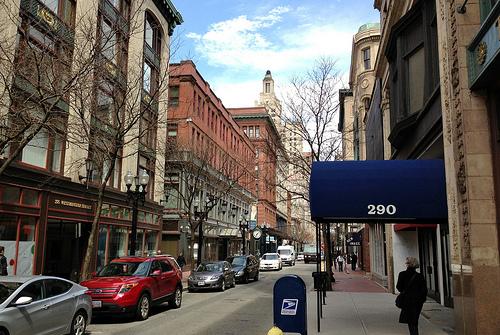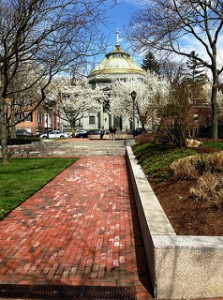Source: Kaid Benfield
Editor's Note: This article originally appeared on NRDC Switchboard and is reposted with permission.
OPINION - It’s ridiculously easy to think about the benefits of historic preservation in immensely walkable Providence, Rhode Island. I’m not sure I’ve seen a better collection of downtown historic architecture this side of New Orleans. Elsewhere there are fine smaller historic downtowns, of course, such as in Annapolis, and wonderful urban historic districts (frequently close to downtowns) such as Old Salem in North Carolina and Over-the-Rhine in Cincinnati. But in Providence, it’s the downtown itself that practically oozes with dignified charm.
I have a feeling that, as was the case with many fine older buildings in my hometown, Providence’s splendid architectural legacy remains intact because, when people were tearing down historic properties a few decades ago and putting up newer but mediocre buildings in their places, Providence’s economy simply couldn’t support the new stuff. So the splendid older buildings remain today, available to be given new life by creative-class businesses.
Providence may be a particularly fine example, but it is hardly the only city with underutilized historic assets that could become a cornerstone of future economic development. Information has largely replaced manufacturing as America’s economic engine, and young, talented workers today are seeking walkable districts with character in which to work and live. (Just ask suburban Dublin, Ohioabout that.) From Pasadena to Portland, from Paducah to Providence, saving and sprucing up these assets is the way to go.
Scott Wolf is the executive director of Grow Smart Rhode Island, an organization that advocates asset-based economic development and smart land use. Scott, who is my colleague on the board of Smart Growth America, argues persuasively that his state should capitalize on its historic architecture by encouraging older buildings’ rehabilitation and use:
“Let’s restore our state historic-property tax credit to once again take advantage of our vast collection of historic buildings and neighborhoods, which we know are settings with great appeal for knowledge-economy companies and workers. It’s far from a coincidence that United Natural Foods, the largest distributor of organic food in America, relocated several years ago from Connecticut to the rehabbed ALCO site, in Providence, that Atrion Networking expanded into Hope Artiste Village, in Pawtucket, after that historic-tax-credit project opened for business, or that Moran Shipping, a technologically sophisticated, homegrown corporation with international reach, decided to forgo a move to Houston and instead relocate to a rehabbed building across from the State House.”
The federal government has a limited tax credit program for investment in income-producing historic properties: in particular, owners of buildings listed on the National Register of Historic Places may be eligible for a 20 percent federal income tax credit that can be applied against the cost of their rehabilitation for reuse; in effect, 20 percent of the rehab costs will be borne by the federal government for most taxpayers. This reflects the public benefits of saving infrastructure and property.











